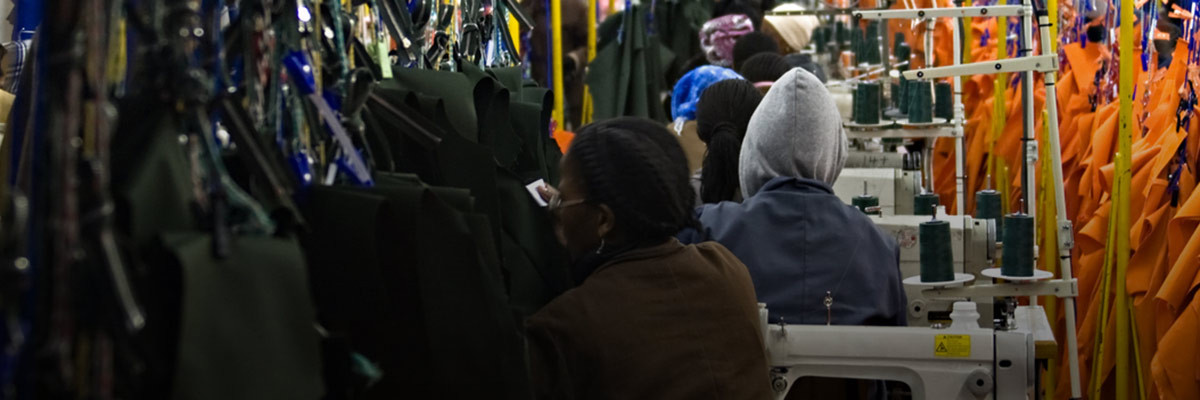
Authors
-
Magali Barraja
Former Associate Director, BSR
-
Annelise Thim
Former Associate Director, BSR
-
Victoria Reca
Former Manager, Equity, Inclusion, and Justice, BSR
We know that we are still a long way from achieving gender parity in the workplace—in part, because the data tells us so. The G7 Gender Equality Advisory Council’s recent report reminds us that despite women’s advancement in many areas of higher education, women are still less likely to participate in the labor market (64 percent) than men (94 percent), continue to be paid less, and are less likely to be promoted to management and senior-level positions.
However, while some of the challenges women face in attaining parity are demonstrated by data-driven insights, many issues that disproportionately affect women remain inadequately captured, and the global gender data coverage is still largely insufficient. The absence of gender and outcome data has led to the development and implementation of both public and private policies and programs that fail to deliver equally beneficial outcomes for men and women—neglecting both the various barriers women face and the number of women who face them. A report from the UN Working Group on the Gender Dimensions of the Guiding Principles on Business and Human Rights reminds us that, too often, the human rights of women are overlooked by companies’ due diligence approaches, including impact assessments. Women count and need to be counted in. This is not only true when identifying, preventing, and addressing company-related human rights impacts in direct operations but also in their further-removed supply chains.
This begs the question: How can companies conduct more gender-responsive due diligence approaches, and what role does gender-disaggregated data play in this? This is the question that BSR’s new guidance Making Women Workers Count: Conducting Gender-Responsive Due Diligence in Supply Chains, funded by the C&A Foundation, sets out to address.
This practical report provides recommendations for both brands and suppliers on how to conduct deliberate gender-focused due diligence through a four-phase approach: 1) assess and analyze, 2) integrate and act, 3) track, and 4) communicate. The report also introduces a set of indicators that can be used to measure outcomes for women and men workers as well as methodologies for collecting and analyzing the data to unearth the root causes of the identified gender gaps.
In the report, we also introduce the Gender Data and Impact (GDI) tool that can be used to conduct a factory assessment to reveal gender gaps in worker outcomes. The GDI tool, publicly available online, allows brands and suppliers to shift the focus of their assessments: starting the analysis by highlighting what outcomes are achieved for women rather than which supplier commitments and practices are in place. While policies and processes do matter, their existence does not systematically guarantee positive outcomes for women and men workers. For example, the existence of reporting channels for sexual harassment, while an important first step, are only useful if workers know about them and are willing to use them, which is why the GDI measures workers’ awareness and trust in reporting mechanisms.
The GDI tool includes a mix of workforce and worker impact indicators that help capture systemic gender discrimination and support the detection of underlying drivers.
- Workforce indicators provide a general overview of the gender makeup of a specific workforce based on a set of criteria, such as contract and job types, wages, and other structural vulnerabilities. Some indicators also assess the gender dynamic of absenteeism and turnover which may be symptoms of complex and multi-faceted issues affecting women workers.
- Worker impact indicators support the evaluation of worker outcomes, perceptions, and behaviors as well as social norms that may influence and contribute to reproducing structural unequal outcomes for women. Assessing women’s empowerment holistically, these indicators spread across six categories representing key enabling dimensions deemed essential for women to thrive in the workplace, such as agency, health and safety, and freedom from violence and harassment.

These indicators, combined with country-level analysis of potential risks and barriers to gender-equal societies and workplaces, can help to illuminate the specific challenges faced by women in factories and farms.
For gender-transformative change to become a reality, we need brands and suppliers to take joint ownership of issues and drive dual accountability of meaningful factory-level improvements.
Beyond the evaluation of worker-specific data and outcomes, the report also acknowledges how important it is for companies to review and assess the impact of their own sourcing practices on workers and to understand how these may disproportionately affect women workers.
Providing a practical framework for conducting gender-responsive due diligence that focuses on outcomes rather than practices is the first step to spur real change for women workers. Implementing this framework will require setting up adequate systems and processes both at the brand and supplier level to collect, manage, analyze, and make use of the gender data for decision-making purposes. However, for gender-transformative change to become a reality, we need brands and suppliers to take joint ownership of issues and drive dual accountability of meaningful factory-level improvements. This can only be achieved through partnerships that are based on mutual trust and genuine commitment at the highest level of both organizations.
BSR is dedicated to helping companies empower women along value chains. Brands interested in learning more about gender-responsive due diligence and the Gender Data and Impact Framework should reach out for a conversation with our Women’s Empowerment team.
Topics
Let’s talk about how BSR can help you to transform your business and achieve your sustainability goals.







